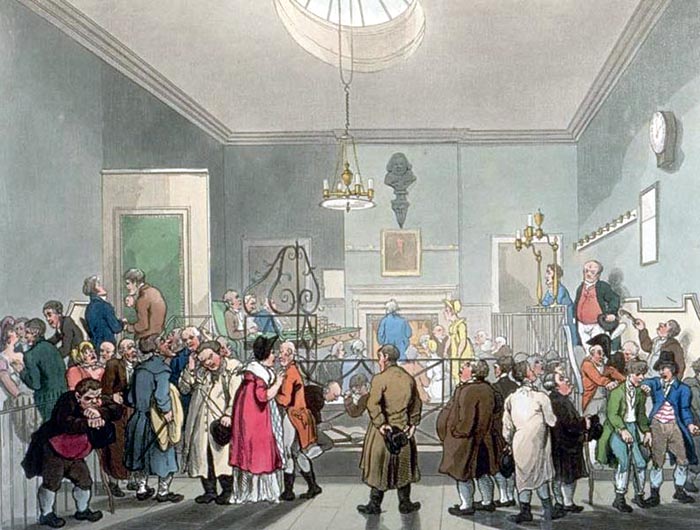Unemployed older men became night watchmen. These night
watchmen caught criminals and if they required help,
they could use greggers or noisemaking rattles to signal
parish constables.
.
In addition, private "thief-takers" could be hired by
victims of crime to apprehend criminals.
.
In 1748, Chief Magistrate Henry Fielding founded the
Bow Street Runners ("runner" being a synonym for "thief-taker").
The Bow Street Runners wore a blue dress
coat with brass buttons and a red waistcoat, which caused
them to be referred to as the "Robin Redbreasts".
The Bow Street Runners were something between barristers and
thief-takers.
.
In 1752, Henry Fielding used his own publication, "The Covent
Garden Journal", to invite victims of crime to contact him
with details of the crimes committed against them, including
properties stolen. Advertisements were then placed in the journal
for the recovery of these items, usually with a reward
attached for finding the perpetrator or the property. The
success of these advertisements encouraged others to publish
journals dedicated to describing criminals and offenses, beginning
with a publication by Henry Fielding's half-brother John,
"The Public Advertiser". The Public Advertiser eventually
became a weekly journal called "The Public Hue and Cry";
later "The Police Gazette."
.
In 1754, Henry Fielding was replaced by his half-brother,
John Fielding.
.
On September 29, 1829, Robert Peel, 2nd
Baronet created the Metropolitan Police.
.
Police magistrates were able to try "minor offenses" — vagrancy,
drunkenness, minor larceny and prostitution — without a jury and
sentence the guilty to hard labor. Thus, they created a way to bypass any
checks on the justice system. Police magistrate Alan Laing of 52-3 Hatton
Street, was Charles Dickens' model for the police magistrate "Mr. Fang of
Mutton Hill" in "Oliver Twist". Dickens wrote that he "sought a
magistrate whose harshness and insolence would render him a fit
subject ..."
("Oliver Twist" Penguin ed., 2002, p. 498)
and found Mr. Laing an appropriate figure.
.


 Website Terms of Use
Website Terms of Use